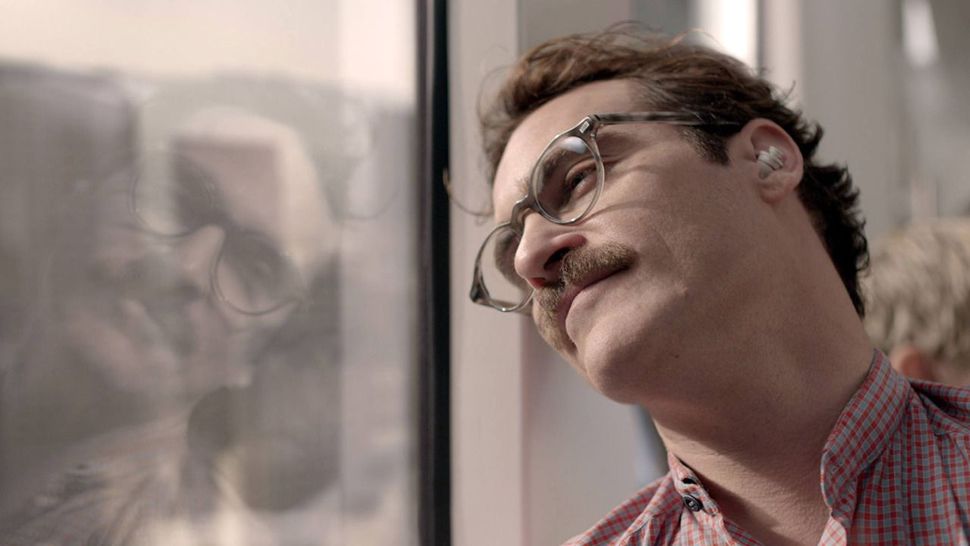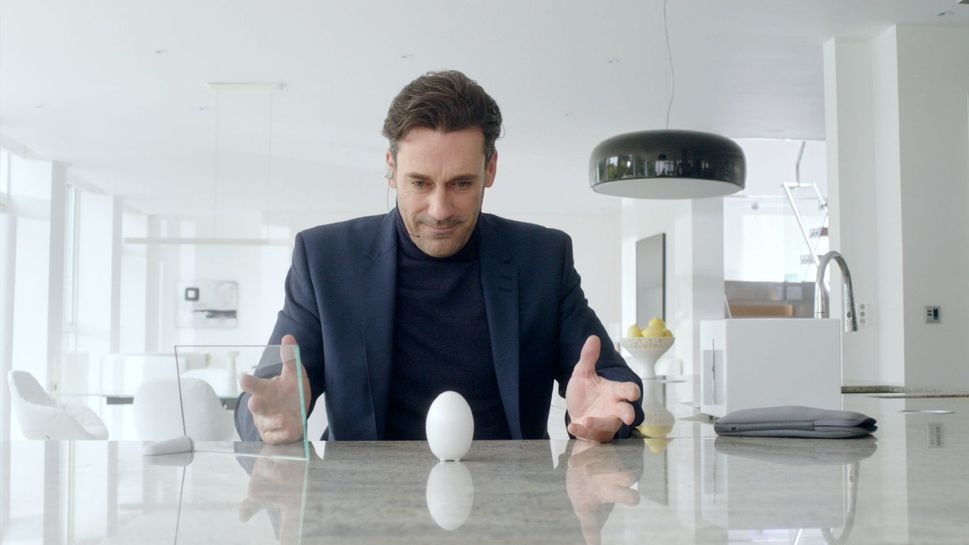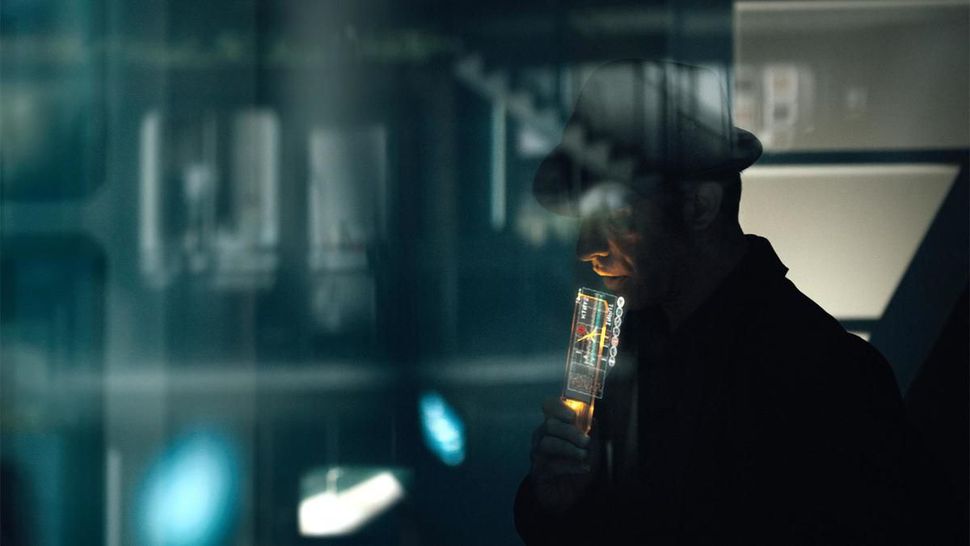“Jarvis, remind me to develop a personality for you later.”
Jarvis is the quintessential artificial intelligence of film (“Iron Man“, “The Avengers“), and now Mark Zuckerberg has used his Stark-like fortunes to build his own. So is film invading your smart home or is it vice versa?
Voice assistants, learning thermostats, smart security, connected light bulbs — it sounds like a dream, but judging by the clever ideas dominating CES, our film fantasies could soon enter the mainstream.
We’ve moved beyond the tacky smart home horror films of the past (a smart home impregnates a woman in “Demon Seed“, and of course it’s from the ’70s). But given how technologically prescient film has been (looking at you “Minority Report“), these penetrating ideas (pun absolutely intended) make disturbing viewing.

The hackable homes of ‘Mr. Robot’
New technology brings new threats: even tech titans like Zuckerberg put tape over their laptop webcams. In a world where cars can be hacked, what does this mean for the smart home?
If “Mr. Robot” is anything to go by, there’s reason to be wary. The techno-thriller follows hacker group fsociety, who acquires a new base of operations by forcing Susan Jacobs, part of fsociety’s nemesis E Corp, to vacate her smart home. That’s right, fsociety hacks a house.
Spoiler: This is what happens to Susan Jacobs.
USA Network
Alarms activate, lights flash, the shower water scalds, the house thermostat chills. “Grand Designs” take heed for a tech home special.
By the end of her ordeal, Jacobs, tightly wrapped in a winter coat, yells at phone tech support to sort out her “smart house package”. Should we prepare for our own smart house wreck-oning?
Yes, according to a recent study by Japanese researchers. The lab at Yokohama National University found that 1.3 million internet-connected devices around the world, from personal video recorders to security cameras, are under the control of cybercriminals.
IoT devices (connected devices that talk to each other, known collectively as the Internet of Things) are gateways to hackers — your toasters and fridges included. Fortunately, companies looking at security measures have found ways to protect you and your (internet of) things.
Butterfleye, known for smart home security cameras, make devices that don’t rely on your home network. Instead, they use two forms of encryption and information stored in the cloud, not the device. Mesh Wi-Fi companies such as Amped Wireless (who make the Ally Plus Whole Home Smart Wi-Fi System) protect your home network from malware and phishing scams by monitoring it constantly, in real time.
The perfect AI of ‘Her’
She composes music, organises emails and falls in love. She’s not Alexa, the Amazon Echo‘s voice assistant, but maybe she’s what Alexa could become. Her name’s Samantha and she’s the utterly charming and powerful AI that organises Theodore Twombly’s life in “Her“.
While Alexa is stationary, Samantha will always be there for you. She talks to you from an earpiece and is primed to work with the smart listening earbuds of today that deliver noise-cancelling and Bluetooth music streaming. Sony has just announced its “Open-Style Concept“, which integrates a hands-free personal assistant, using bone conduction to transmit sound to your ears. There’s also Motorola’s VerveOnes+, which support Siri and Google Now.


Utterly charming.
Warner Bros.
Sadly, present voice assistants can’t philosophise about existence, or help you with your relationships or seamlessly hold a conversation. But if we’re lucky (and very smart), they could be well on their way.
AI is one of the hottest areas of computing. Google‘s AlphaGo can beat you in Go, one of the world’s most complicated strategy games; Intel recently announced its commitment to future AI products like its Nervana Engine chip; and Samsung has launched “Bixby“, its own AI assistant, with the new Galaxy S8 phone.
If we do have Samantha organising our lives one day, a warning (and a spoiler): At the end of the film, Samantha abandons Theodore for a “life” on a higher plane with other AIs.
The smart home of ‘Black Mirror’ that knows you too well
Now this probably won’t come true. Probably.
The smart home in “Black Mirror” episode “White Christmas” is controlled by an AI whose name fits right in with Alexa’s squad. Cookie knows exactly how to make her homeowner Greta’s house perfect. Exactly. To the point of browning Greta’s toast to her favoured slightly undercooked hue.
That’s because Cookie is a digital copy of Greta’s consciousness. A special tech doctor implants a “cookie” in Greta’s brain so it can learn to mimic her personality. He then surgically removes the chip and uploads the information into a portable electronic device.


Embroiled in a hard situation.
Channel 4
This device looks like an egg — it looks like the Amazon Echo or the Google Home. But don’t peek inside, because it’s disturbing (although if you watch this show, you’re probably into that). We see a miniature copy of Greta in a simulation of a white control room, much like Star Trek. Through torture, the doctor completely breaks Cookie’s spirit so all she has to live for is controlling the house: browning toast, lifting the blinds and playing peppy music for her homeowner to wake up and go-go.
Safe to say, Cookie isn’t happy. Luckily for Alexa, she isn’t in the same egg.
The ordinary smart apartment of ‘The Expanse’
“The Expanse” is set in a far future, 200 years away, yet it’s surprisingly grounded in its depiction of our homes. Notice I’ve dropped “smart” — there are ways you can fool these homes, once or even twice.
In order to infiltrate a smart apartment and collect clues, Detective Miller uses voice-morphing technology to make his voice sound like its owner, Julie Mao. This way he can access all the voice-activated devices she’s left in her apartment, 5151-I on Ceres Station.


Voice imitation tech.
Syfy
Julie has a mechanical hamster and a voicemail machine that displays a hologram of her face. Aside from that, her apartment looks familiar. Even the corridor carpet is patterned with the tacky brown motel stripes we know and cringe at. From an exterior shot, we see the building has the rundown aesthetic of an average apartment block or estate of today, with New York-style fire escapes and grey metal materials.
Julie’s apartment looks like a reasonable version of what our smart homes might become: homes for the average person. They have neither the spaceship shine of an Apple product, nor AIs to control them.
Still, another security threat presents itself. Adobe’s “Photoshop of speech” software (not yet released) can manipulate an audio recording to include words and phrases, imitating the recorded voice. So, potentially, you could fool someone’s smart home into not being so smart and opening its doors.
Amazon and Apple save voice data from Echo and Siri recordings; data which is supposed to help improve the tech and instead presents both a privacy question and a potential investigative tool. Police obtained a warrant for recordings from Amazon over a murder in 2015, involving an Echo that was found at the crime scene. The device had been triggered and was playing music; police hoped background noises would provide clues. Amazon declined to hand over the recordings, because users’ queries to Alexa are protected under the First Amendment.
The future of the smart home
If these filmmakers aim to comment on anything, it’s that you won’t be able to escape the smart home. One day our very own Jarvis will leave the baby crib, go to university, then come back and take care of us.
“Sir, the more you struggle the more this is going to hurt.”